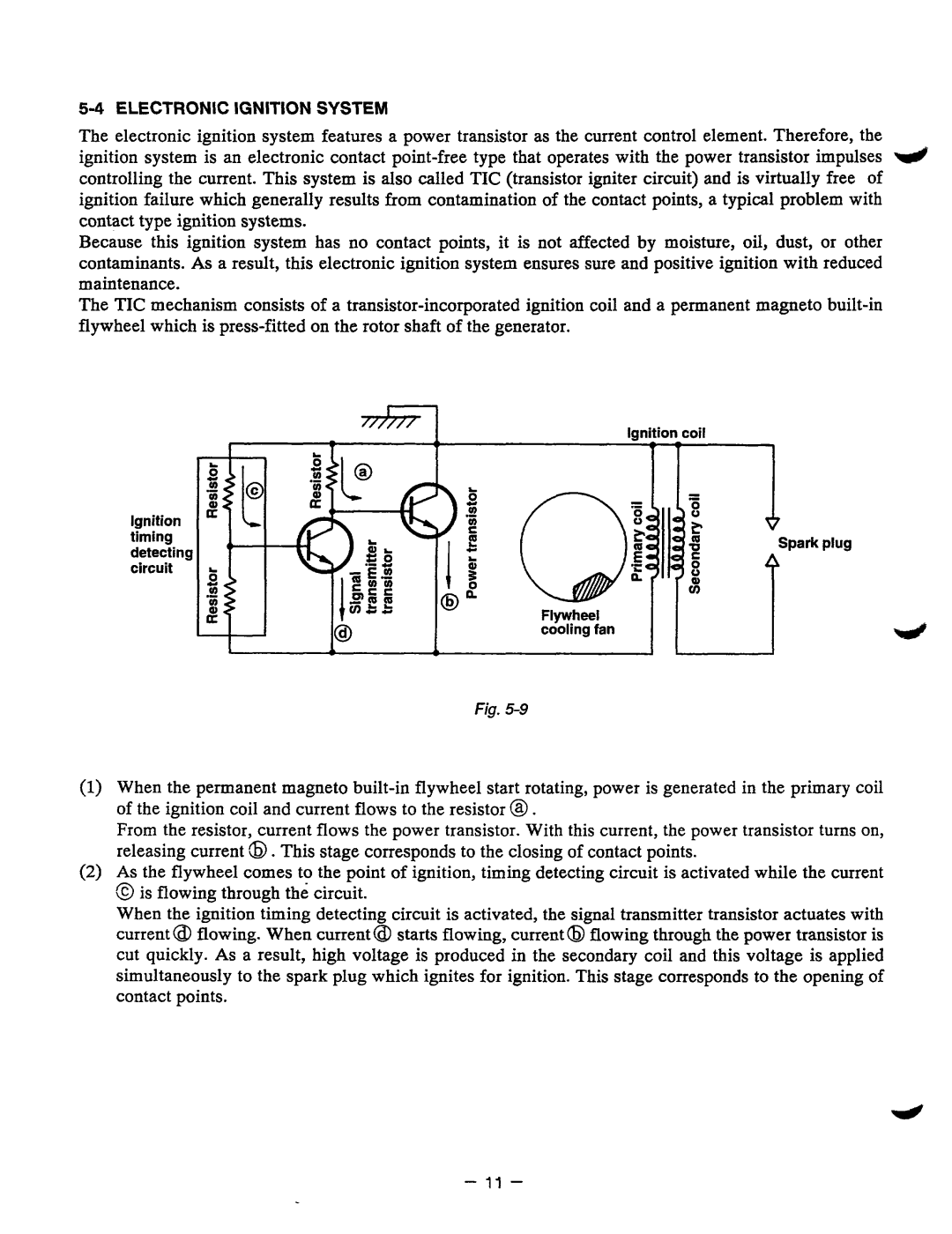
5-4 ELECTRONIC IGNITION SYSTEM
The electronic ignition system features a power transistor as the current control element. Therefore, the ignition system is an electronic contact
Becausethis ignition systemhas no contact points, it is not affected by moisture, oil, dust, or other contaminants. As a result, this electronic ignition system ensures sure and positive ignition with reduced maintenance.
The TIC mechanism consists of a
Fig.
(1)When the permanent magneto
From the resistor, current flows the power transistor. With this current, the power transistor turns on, releasing current a.This stagecorresponds to theclosing of contact points.
(2)As the flywheel comes to thepoint of ignition, timing detecting circuit is activated while the current
@is flowing through the circuit.
When the ignition timing detecting circuit is activated, the signal transmitter transistor actuates with current @ flowing. When current@ starts flowing,current @ flowing through the power transistor is cut quickly. As a result, high voltage is produced in the secondary coil and this voltage is applied simultaneously to the spark plug which ignites forignition. This stagecorresponds to the opening of contact points.
- 11 -
